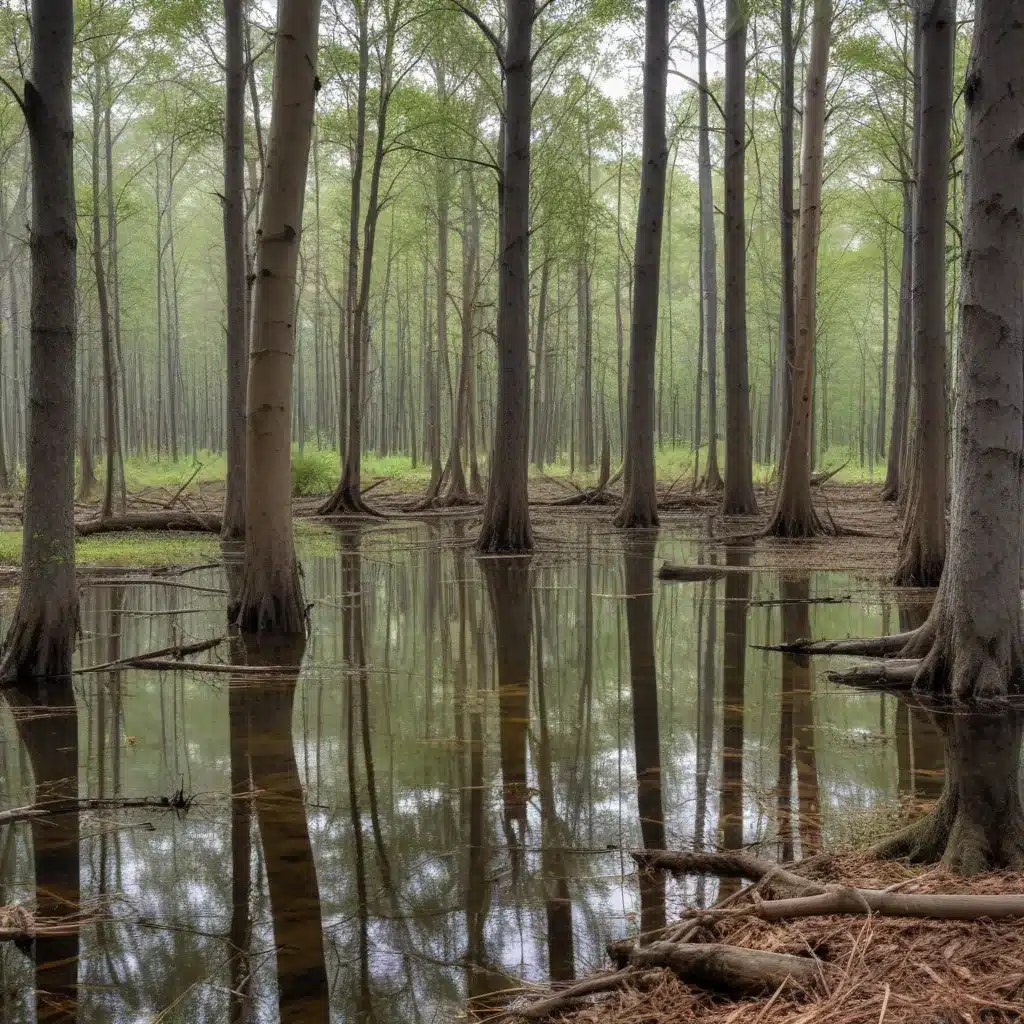
The Overlooked Risk of Climate-Driven Forest Decline
For centuries, forests have been regarded as the natural guardians of our drinking water quality. However, this long-held belief is now being challenged in light of the increasing frequency and intensity of climate extremes, such as prolonged droughts coinciding with high temperatures. These events have caused unprecedented pulses of forest dieback globally, jeopardizing the crucial role forests play in protecting our water resources.
Forests Under Stress: The Impacts of Climate Change
Climate change-driven droughts and heat waves are taking a severe toll on forest ecosystems worldwide. Recent studies have documented alarming rates of tree mortality, with entire swaths of forests succumbing to the stresses of these extreme weather events. This phenomenon, known as forest dieback, can have far-reaching consequences for the quality and availability of our drinking water.
Forests play a vital role in the hydrological cycle, regulating water flows, filtering contaminants, and replenishing groundwater aquifers. However, when forests experience widespread dieback, this delicate balance is disrupted, potentially transforming these once-reliable water sources into potential threats to water quality.
Unraveling the Link: Forest Dieback and Drinking Water Contamination
To better understand the impact of forest dieback on drinking water protection, a comprehensive assessment was conducted across Germany, one of the countries hit hardest by the unprecedented Central European drought of 2018-2020. The findings, published in a recent preprint on bioRxiv, reveal a startling reality:
- Forests cover a significant portion (43%) of the designated Drinking Water Protection Areas (WPAs) in Germany.
- Within just three years, a substantial 5% of this forest canopy cover was lost due to the direct or indirect impacts of the drought.
- Spruce-dominated forests, which make up 28% of all forests in WPAs, were particularly susceptible to dieback.
- Alarmingly, the study found that nitrate concentrations in the groundwater of WPAs with severe forest dieback more than doubled on average, compared to WPAs without significant disturbances.
These findings underscore the critical importance of addressing the hidden threat that forest dieback poses to our drinking water resources. As climate change continues to exacerbate the frequency and intensity of extreme weather events, the risk of forest dieback in WPAs is only expected to increase, potentially compromising the quality and safety of our water supplies.
Uncovering the Knowledge Gaps
Despite the growing awareness of the link between forest dieback and water quality, there are still significant gaps in our understanding of the underlying mechanisms and controlling factors. The bioRxiv study highlights the need for further data and research to develop well-informed prediction, adaptation, and mitigation strategies.
Unraveling the Complex Interactions
The study revealed pronounced differences in the impacts of forest dieback on water quality among different WPAs, suggesting that the relationship is not straightforward. Factors such as the specific tree species composition, soil characteristics, and groundwater dynamics likely play crucial roles in determining the extent and nature of the contamination.
To address these complexities, researchers are calling for an interdisciplinary approach, combining expertise from fields like forestry, hydrology, and water quality management. By delving deeper into the interplay between forest ecosystems and water resources, we can gain a more comprehensive understanding of this hidden threat and develop effective solutions.
Bridging the Data Divide
One of the primary challenges in addressing the forest dieback-water quality conundrum is the lack of comprehensive data. The bioRxiv study relied on limited sources, highlighting the need for more extensive monitoring and data collection across drinking water protection areas.
Establishing robust monitoring networks that track forest cover, tree health, and water quality parameters over time could provide the critical insights needed to unravel the causal relationships. Additionally, integrating this data with climate projections and land-use patterns could help predict and prepare for future challenges.
Towards a Resilient Future
As we grapple with the far-reaching impacts of climate change, it is evident that the protection of our drinking water resources must be a top priority. The threat of forest dieback in Drinking Water Protection Areas demands immediate attention and action.
Collaborative Approaches to Safeguard Water Security
Addressing this challenge will require a multifaceted, collaborative approach involving various stakeholders, including policymakers, water utilities, forestry agencies, and local communities. By fostering interdisciplinary partnerships and knowledge-sharing, we can develop comprehensive strategies to mitigate the risks and build resilience.
Some key strategies may include:
- Enhancing Monitoring and Data Collection: Investing in robust monitoring networks and data platforms to track forest health, water quality, and their interconnections.
- Promoting Adaptive Forest Management: Exploring alternative forestry practices that enhance the climate resilience of tree species within Drinking Water Protection Areas.
- Strengthening Regulatory Frameworks: Updating policies and regulations to address the emerging threats posed by forest dieback and ensure the long-term protection of drinking water sources.
- Engaging Local Communities: Empowering community-based initiatives that foster environmental stewardship and raise awareness about the critical link between forests and water security.
A Call to Action: Safeguarding Our Water Future
The hidden threat of forest dieback in Drinking Water Protection Areas demands our immediate attention and action. By recognizing the gravity of this challenge and taking concerted steps to address it, we can safeguard the integrity of our water resources and ensure a sustainable future for generations to come.
As the Joint Action for Water community, we are committed to driving this critical conversation forward. Through collaborative research, policy advocacy, and community engagement, we can unlock the necessary solutions to protect our forests and secure our drinking water supplies in the face of a rapidly changing climate.
Join us in this vital endeavor as we work towards a more resilient and water-secure future.

